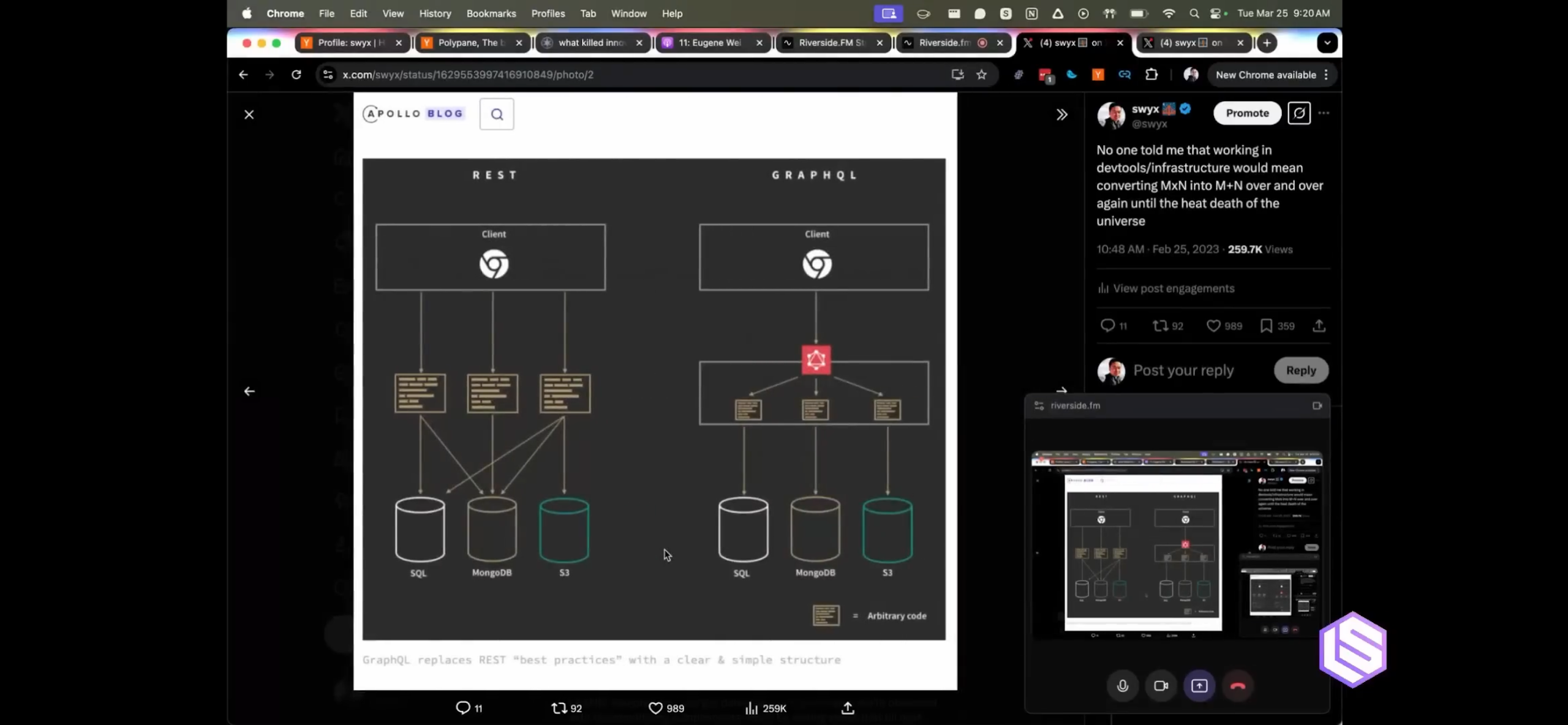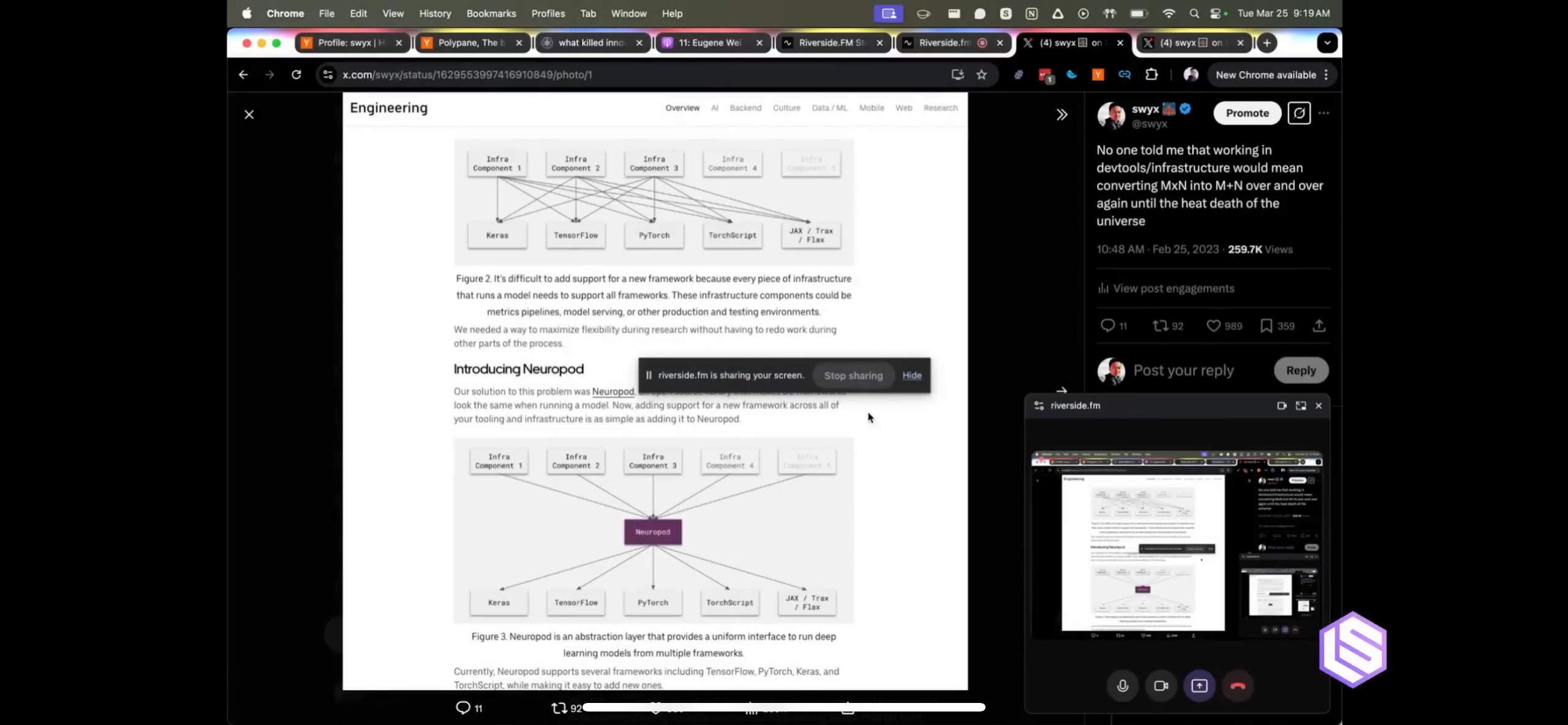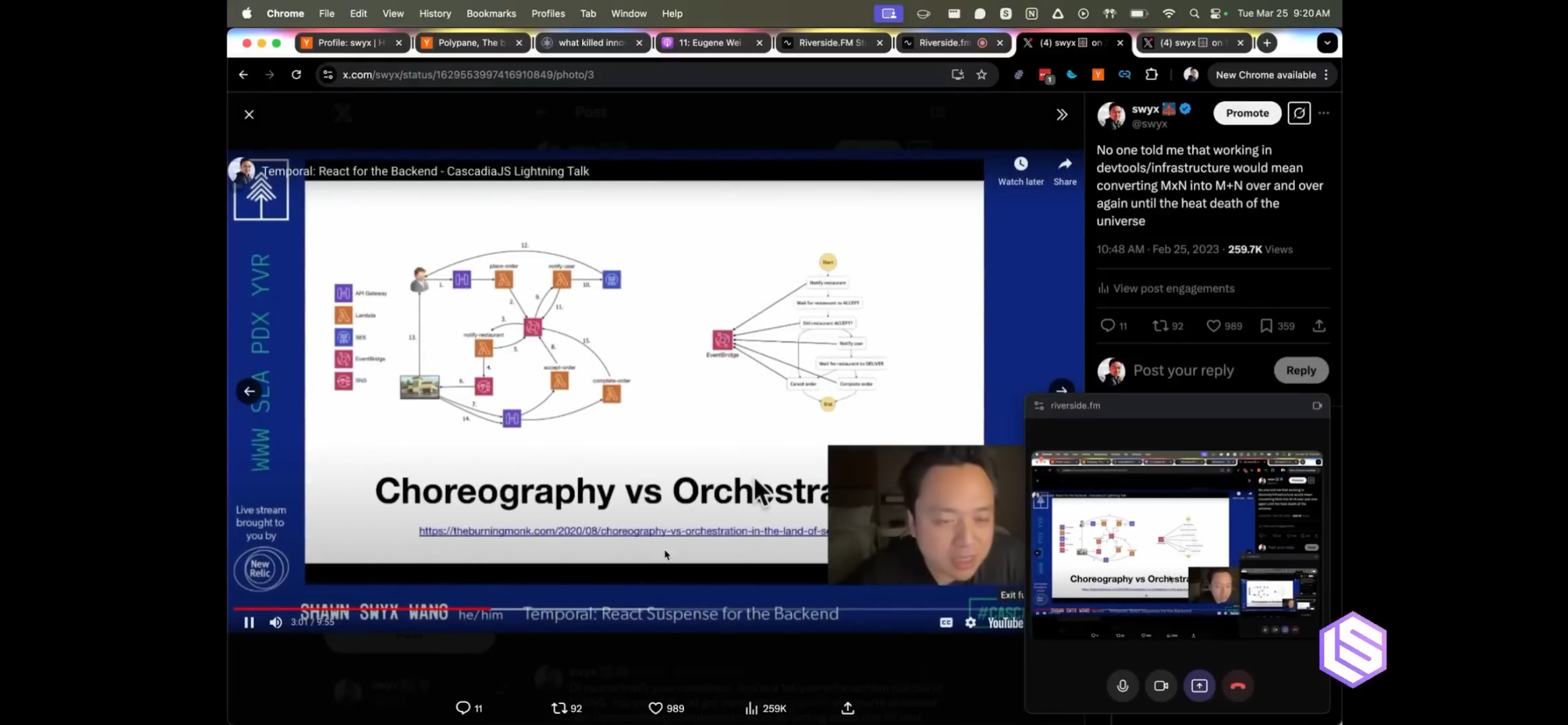The M×N Problem in Software Architecture
Understanding the combinatorial complexity problem that plagues many software systems, and how modern architectures solve it.

- David Gérouville-Farrell
- 4 min read

I’ve heard about the “M×N problem” a couple of times lately. After watching Swyx on the Latent Space podcast interviewing the creators of MCP from Anthropic, where he mentioned this problem again, I decided to figure out what it actually meant. According to Swyx, it’s a problem he’s had to solve repeatedly in his career because of his work on developer tooling.
The M×N Problem Defined
The M×N problem occurs in software architecture when you have M components that need to interact with N other components, with each interaction handled individually. This creates a tangled web of connections where the total number of integrations grows to M × N.
This might sound abstract, but it’s a pattern that appears constantly in software systems. Whenever we have multiple sources of events connecting to multiple targets, we risk creating this complexity explosion.
The image above shows how event handlers in jQuery directly manipulate DOM elements, creating many point-to-point connections. React.js, on the other hand, uses a state-based approach that centralises these interactions.
Why This Matters
The core issue here is coupling. In a system with M×N connections:
- Adding a new component requires wiring it to potentially every existing component
- Logic becomes scattered across the codebase
- Changes in one part can have unpredictable effects elsewhere
- Debugging becomes exponentially more difficult
These systems quickly become brittle and resistant to change-exactly what we try to avoid in good architecture.
The M+N Solution
According to Swyx, the solution to this problem is to introduce a shared abstraction layer or central coordinator. Instead of direct links between components, all M sources send messages to a shared system, and all N targets read from it.
This transforms the connection count from M×N to M+N.
This diagram from the Apollo Blog illustrates the difference between REST, where clients need to know about various endpoints (M×N), versus GraphQL, which provides a single interface that handles the complexity internally (M+N).
Real-World Examples
UI Frameworks: jQuery vs React
The evolution from jQuery to React demonstrates this shift clearly:
- jQuery encouraged direct manipulation: select an element, modify it. Each event handler contained custom logic for updating specific DOM elements, leading to scattered logic and brittle interfaces.
- React introduced a state-centric model where UI is a function of state. Components don’t directly manipulate each other; they update a shared state that triggers re-rendering.
The Neuropod architecture shown above is another example of this pattern. It provides a unified interface for multiple machine learning frameworks, reducing the complexity of working with different models.
System Design: Choreography vs Orchestration
In distributed systems, we see similar patterns:
- Choreography: Services emit and respond to events with minimal central coordination
- Orchestration: A process manager coordinates the workflow explicitly
While choreography offers flexibility, it can create an implicit M×N problem as services need to understand messages from many sources. Orchestration centralises this logic, making the system more predictable.
This slide from a presentation on Temporal React shows the fundamental difference between choreography (with many connections between services) and orchestration (with a central coordinator).
API Design: REST vs GraphQL
The shift from REST to GraphQL presents another example:
- In REST, each client must be adapted to specific endpoints, with custom logic for combining data from multiple sources. The client needs to understand the API’s structure in detail.
- With GraphQL, clients declare what they want, and a single endpoint handles the complexity. The server centralises the logic of fulfilling these requests.
thingsithinkithink
-
The M×N problem is a lens through which we can talk about system complexity. It helps explain why certain architectures feel cleaner and more maintainable than others.
-
Many architectural patterns we consider “modern” apply this principle of reducing connections through abstraction. State management (Redux, MobX), event buses, message queues, and API gateways all serve this purpose.
-
There’s a trade-off between the simplicity of direct connections and the overhead of an intermediary layer. For very small systems, M×N might be simpler initially. The challenge is recognising when you’re reaching the inflection point where M+N becomes the better approach.



